Advancing Science and Technology to Reduce Costs While Maintaining or Improving Protection of Human Health and the Environment
September 28, 20182018 LONG-TERM STEWARDSHIP (LTS) CONFERENCE
Groundwater Compliance Challenges
- Ken Starr, LM (Moderator)
- Martin Amos, DOE Consolidated Nuclear Security, Pantex Plant – Managing Risk in the Uncertain World of Groundwater Cleanup: A Case Study of the Pantex Plant Southeast Perched Groundwater Lobe
- Kenneth Williams, Lawrence Berkeley National Laboratory – Surface Water-Groundwater Interactions as a Critical Component of Uranium Plume Persistence
- Mark Rigali, Sandia National Laboratories – Performance of an In Situ Hydroxyapatite Permeable Reactive Barrier at the Old Rifle Uranium Processing Mill Site
- John Bargar, SLAC National Accelerator Laboratory – Biogeochemical-Hydrological Uranium Trapping Mechanisms in Alluvial Sediments in the Upper Colorado Basin
Conference attendees not only learned about the challenges of groundwater remediation compliance, but were also encouraged to find new and innovative ways to address these challenges.
“It is too easy to become complacent in the warm and fuzzy thought that LTS is a place of certainty and surety,” Martin Amos told the audience. “Resist the temptation to forget how the problem has been defined and revisit the details of the conceptual site model with the purpose of truly understanding the remaining risks.”
Mark Rigali addressed such traditional thinking when he presented on using apatite—a phosphate mineral such as hydroxylapatite—as a possible permeable reactive barrier (PRB) solution. According to Rigali’s research, apatite offers low-cost deployment in comparison to traditional PRB deployments, as well being minimally invasive to the site
where it is deployed.
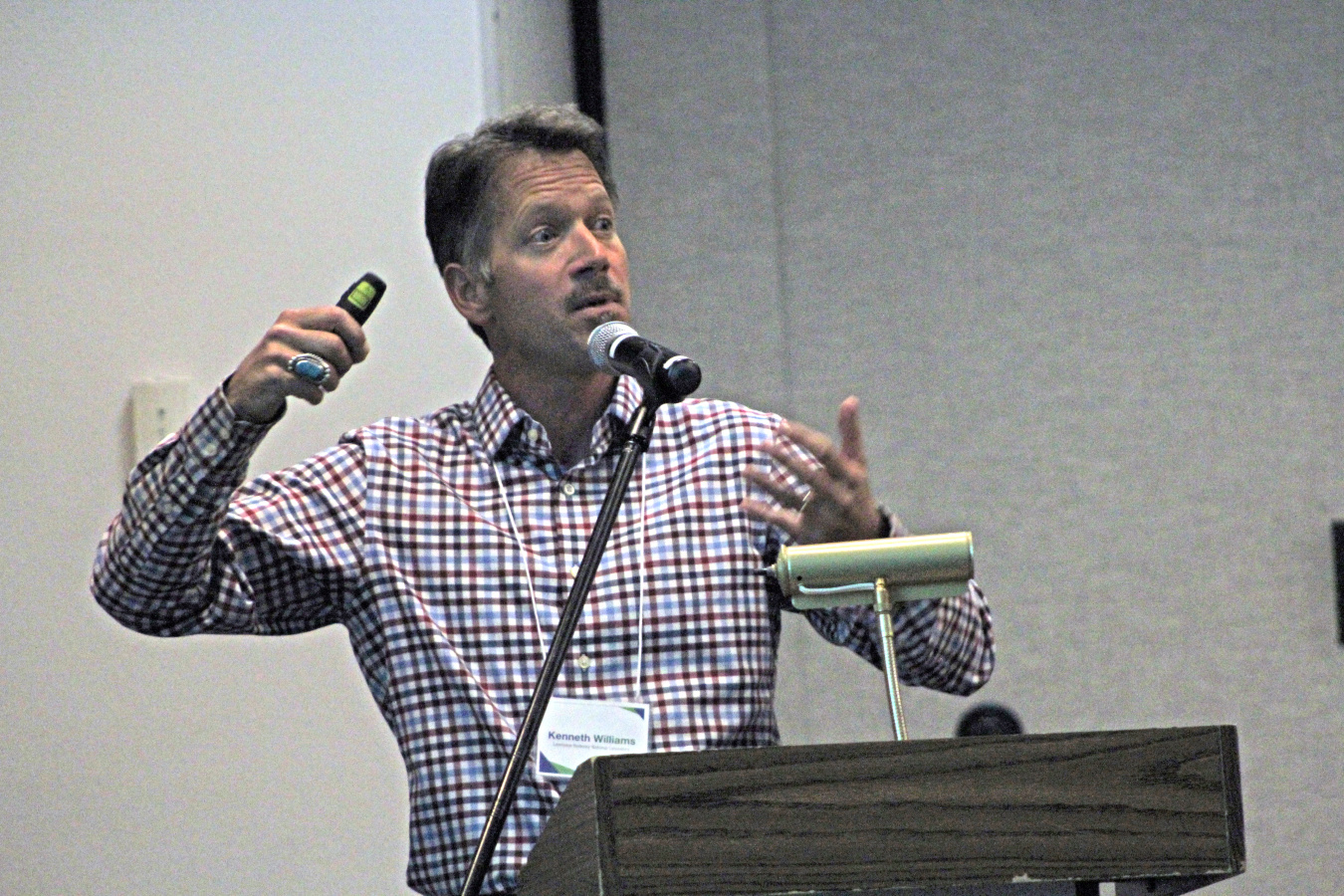
Kenneth Williams uses the Rifle, Colorado, Disposal/Processing Site as an example of a natural laboratory for investigating the underlying causes for uranium plume persistence.
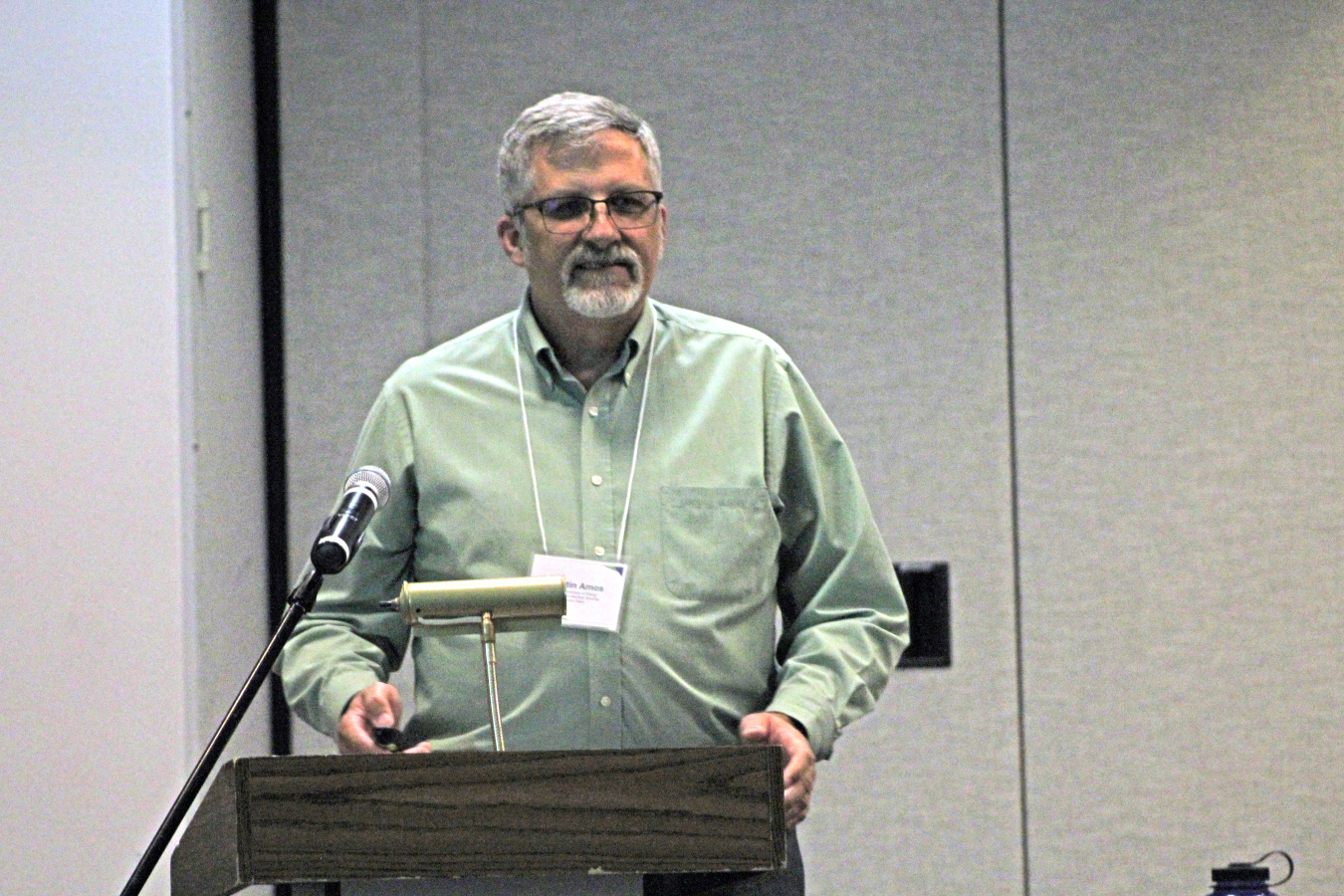
Martin Amos discusses how to effectively manage risk in cleaning up groundwater.
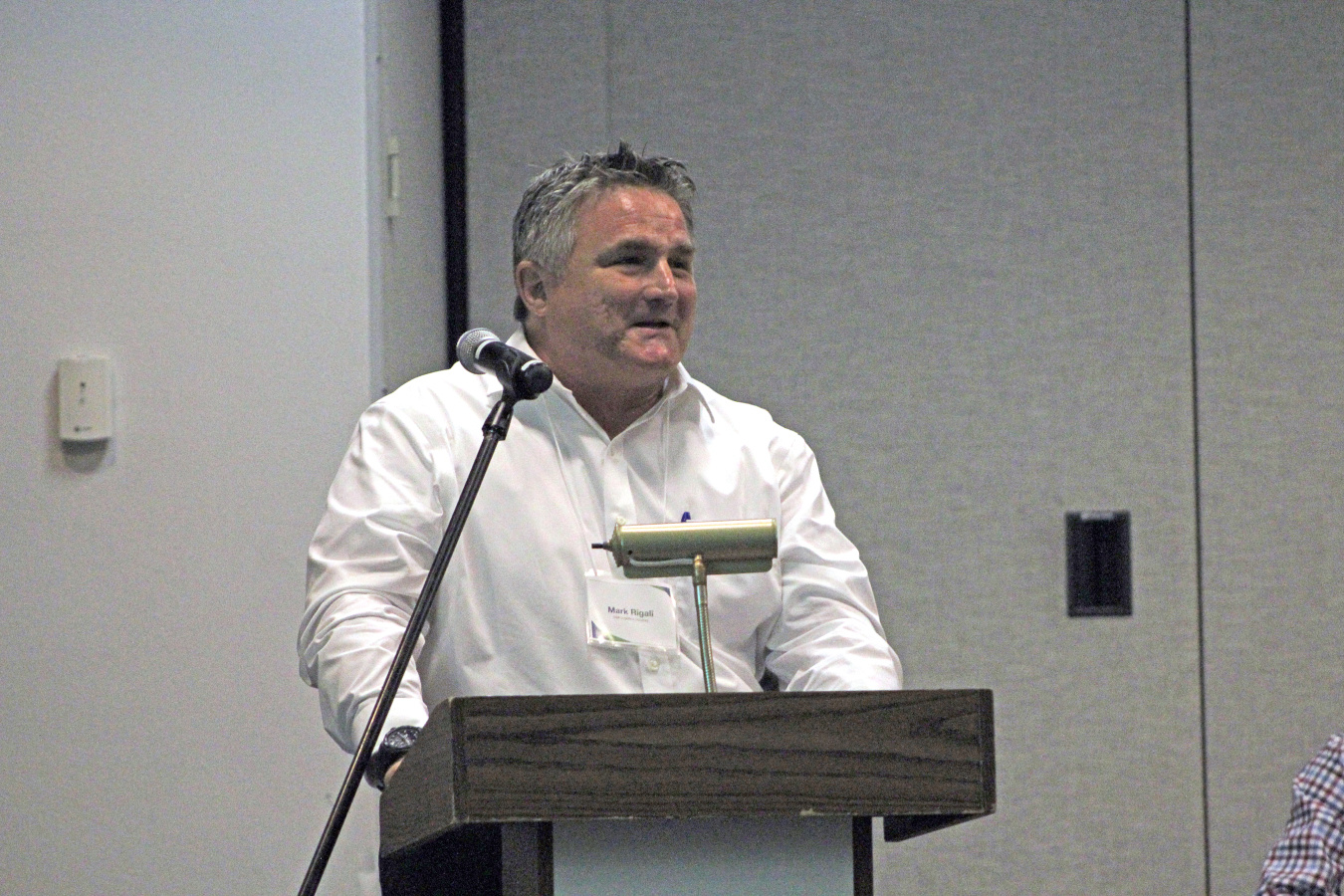
Mark Rigali reports on the field deployment and subsequent performance of new technology at the Rifle site.
Understanding the Post-Closure Changes of Engineered Disposal Cell Covers
- David Shafer, LM (Moderator)
- Art Kleinrath, LM (Moderator)
- Russell McCallister, DOE Office of Environmental Management – Challenges in Long-Term Remediation of the Moab UMTRA Project
- Sue Collins, Sandia National Laboratories – Long-Term Stewardship of Three Evapotranspirative Covers, 15 Years
- Craig Benson, University of Virginia-Engineering – Field Hydrologic Performance of Earthen Covers for Uranium Mill Tailings Disposal Sites on the Colorado Plateau and Field Evaluation of Radon Fluxes from In-Service Disposal Facilities for Uranium Mill Tailings
- Mark Fuhrmann, U.S. Nuclear Regulatory Commission – Can Pb-210 Profiles in Radon Barriers be Used as Indicators of Long-Term Rn-222 Transport?
- Morgan Williams, University of California Berkeley – The Spatial Development of Soil Architecture at Four UMTRCA Sites: Implications to Hydraulic Conductivity and Long-Term Performance
- Jody Waugh, Navarro Research and Engineering, Inc. – Are Natural Processes Transforming Conventional Disposal Cell Covers into Evapotranspiration Covers? Should We Enhance Beneficial Processes?
Under the Uranium Mill Tailings Radiation Control Act (UMTRCA), specific regulations were put into place that describe how disposal cell covers are to be designed and engineered. Though a long-term solution, cell covers are not immutable and face several challenges.
Some of the challenges are purely economic.
Russell McCallister presented on the high cost of materials for the Crescent Junction, Utah, Disposal Site. Rock materials for the cover are shipped in by rail from more than 90 miles away, and even though more than nine million of tons of mill tailings from the Moab Uranium Mill Tailings Remedial Action project site have been disposed of, the project is only 58 percent complete.
Other challenges involve the natural surroundings of the covers.
Craig Benson discussed the differences between conventional resistive covers (riprap surface with fine-textured radon barriers) and water-balance covers (ones that rely upon evapotranspiration), and how the effectiveness of each cell cover solution depends on local conditions, such as annual precipitation.
In some cases, natural processes blend these two models together. As Jody Waugh’s presentation suggested, if vegetation is allowed to establish on disposal cells, conventional covers will begin to function more like water-balance covers without the risk of increases in radon flux. Results of Waugh’s research support the premise of allowing or enhancing the ecological conversion of selected conventional covers into ones that depend upon evapotranspiration.
A panel discussion on this topic followed the presentations.
Advances in Environmental Science
- Andrew Griffith, DOE Office of Nuclear Energy (NE) (Moderator)
- Steven Link, Confederated Tribes of the Umatilla Indian Reservation – Reducing Costs of Ecological Restoration at the Hanford Site: Using Native Species to Control Weeds and Technology to Reduce Greenhouse Propagation Costs
- Raymond Johnson, Navarro Research and Engineering, Inc. – Zooming in for a Microscopic View of Uranium Plume Persistence
- Raymond Johnson, Navarro Research and Engineering, Inc. – Multiple Tracer Testing Approaches for Improved Groundwater Flow and Reactive Transport Models
- Nancy Hess, Pacific Northwest National Laboratory – Advanced Molecular Characterization Approaches to Enable Management of Legacy Contaminant Fate and Transformation
Environmental science approaches have proven useful in legacy management for reducing costs and improving protection of human health and the environment.
Steven Link described the use of native plants for revegetation of landfill covers at the Hanford, Washington, Site. Link said trials at the Hanford site showed that use of native species can reduce remediation costs by focusing revegetation on species that more successfully withstand weed competition.
Raymond Johnson gave two presentations during this session detailing new findings in understanding the dynamics of plume persistence, as well as how tracer testing approaches for groundwater flows can be used to modify reactive transport models.
Nancy Hess described advanced imaging, mass spectrometry, and modeling and simulation capabilities at the Environmental Molecular Science Laboratory. These new approaches have allowed detailed characterization of contaminant reactivity that has informed subsequent management decisions at several DOE legacy sites. “Unraveling a phenomenon at the molecular level is essential for robust predictive models at the field scale,” Hess said.
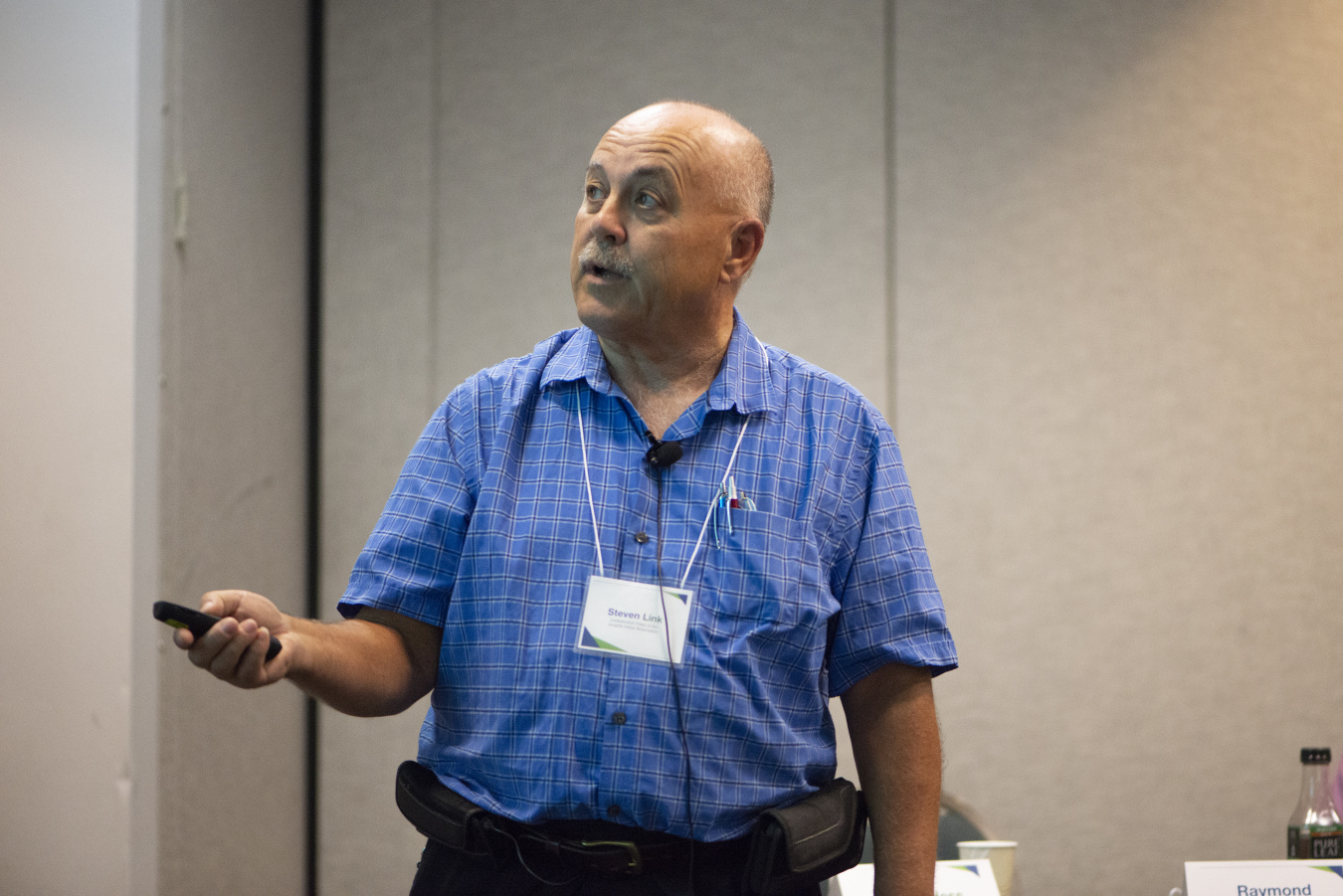
Steven Link discusses the role of native species in ecological restoration efforts at the Hanford site.
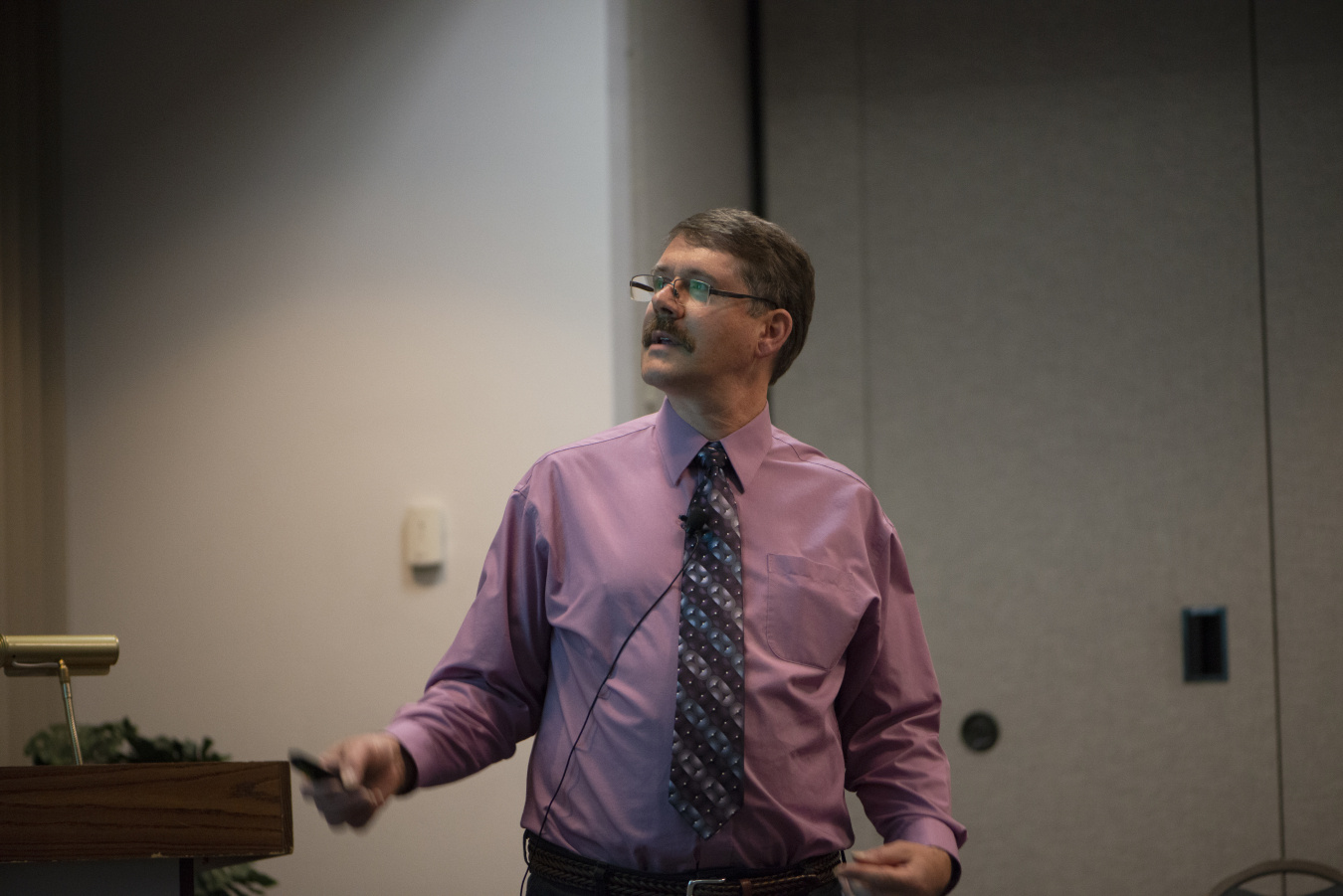
Raymond Johnson shares why more detailed information is needed to better understand uranium plume persistence.
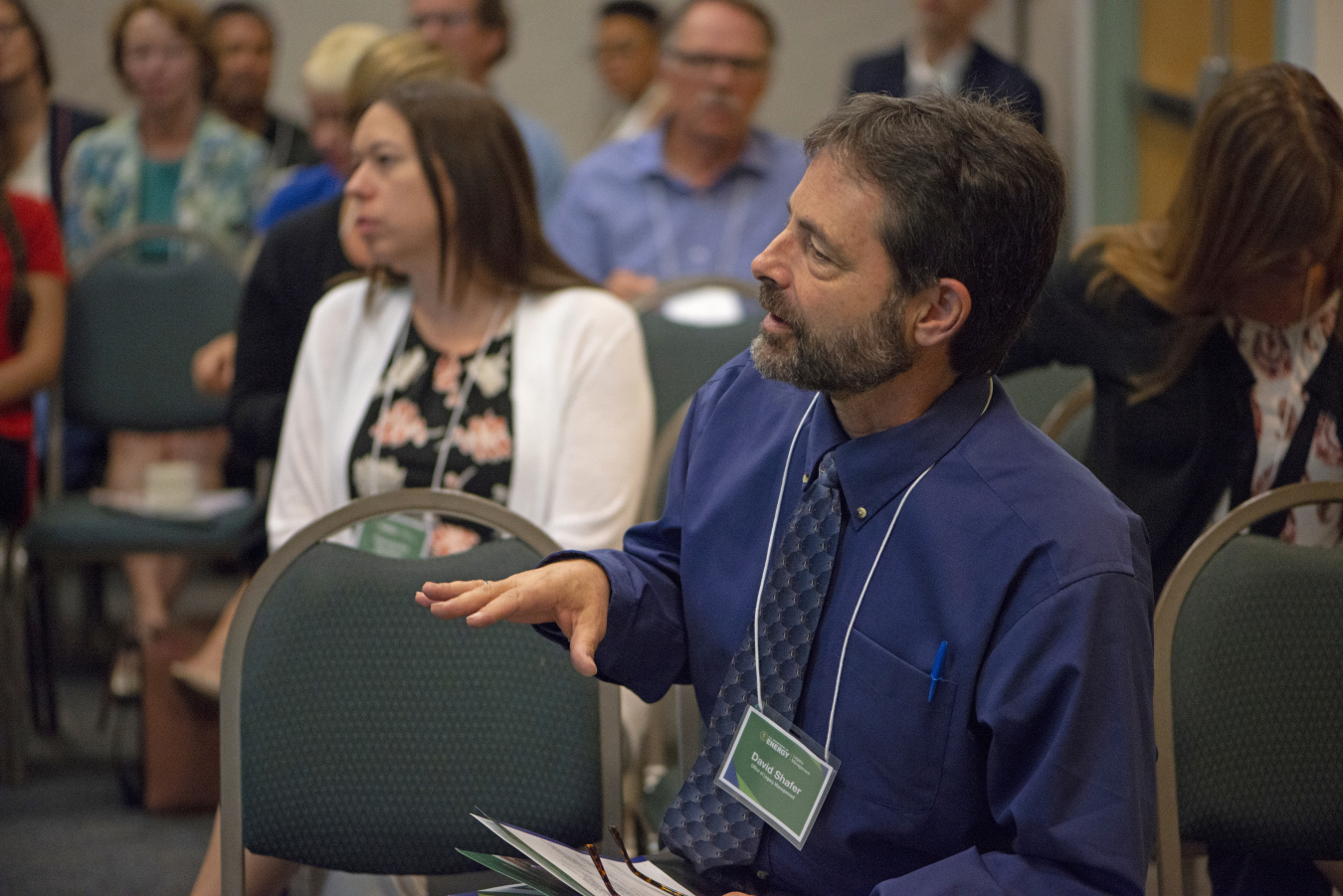
As an audience member, David Shafer provides his insight during a presentation.
Advances in Data Acquisition
- Josh Linard, LM (Moderator)
- Christopher Jarchow, Navarro Research and Engineering, Inc. – Using Remote Sensing to Characterize Landscape-Scale Vegetation and Evapotranspiration at UMTRCA Sites
- Susan Kamp, Navarro Research and Engineering, Inc. – Data Mining and Remote Data Acquisition to Assess Gold King Mine Release Impacts at LM Sites
- Brian Soliday, Juniper Unmanned – Unmanned LiDAR for Legacy Management
- Heather Theel, U.S. Army Research and Development Center – Restoration Monitoring: Integrating Innovative Spatial Technologies
Speakers discussed how remote and spatial technologies are enhancing data collection and characterization at many LM sites.
Christopher Jarchow described new methods for collecting data on vegetation and evapotranspiration on disposal cells using remote sensing. He said the availability of new high-resolution data allows analysts to get down to the species level in studying evapotranspiration using remote sensing. Cutting-edge remote-sensing technologies can help site managers by characterizing vegetation and addressing site-specific management needs.
Susan Kamp described how site managers responded to the release of three million gallons of acidic, mine-impacted water from the Gold King Mine above Silverton, Colorado, into theAnimas River, which eventually moved into the San Juan River. She said the release had the potential to affect groundwater at two LM sites located on the San Juan floodplain. LM utilized in-house data mining tools and remote environmental monitoring technologies for the evaluation. They determined there was no impact from the Gold King Mine release on either of the sites.
Brian Soliday and Heather Theel presented on the potential use of unmanned aerial systems and other remote sensing platforms for legacy management challenges. Theel described a project at the Fernald Preserve, Ohio, Site for environmental monitoring.
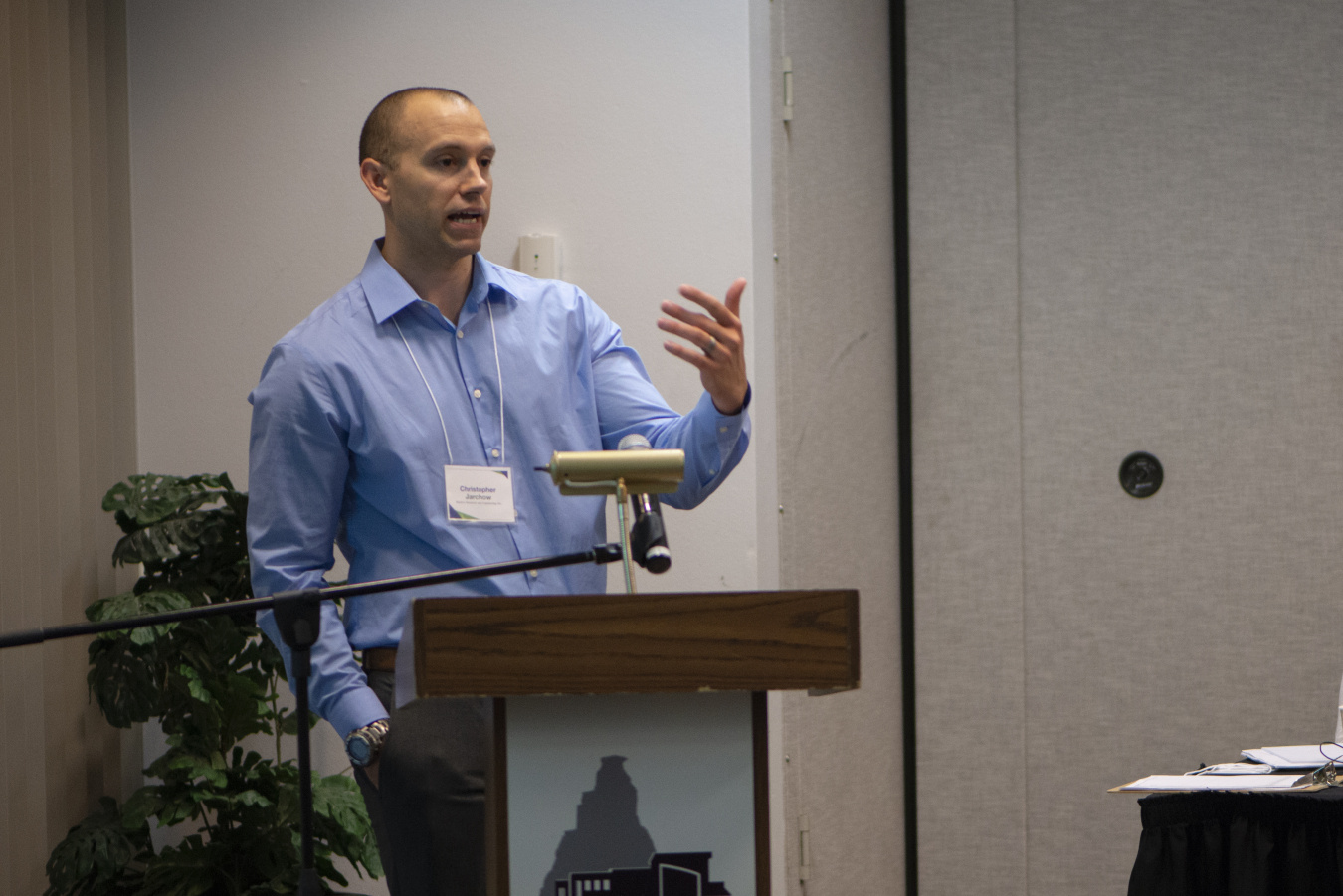
Christopher Jarchow presents on the use of remote sensing as a means to characterize sites.

Susan Kamp shares how LM utilized data mining tools and remote environmental monitoring technologies to evaluate the impacts of the Gold King mine release.
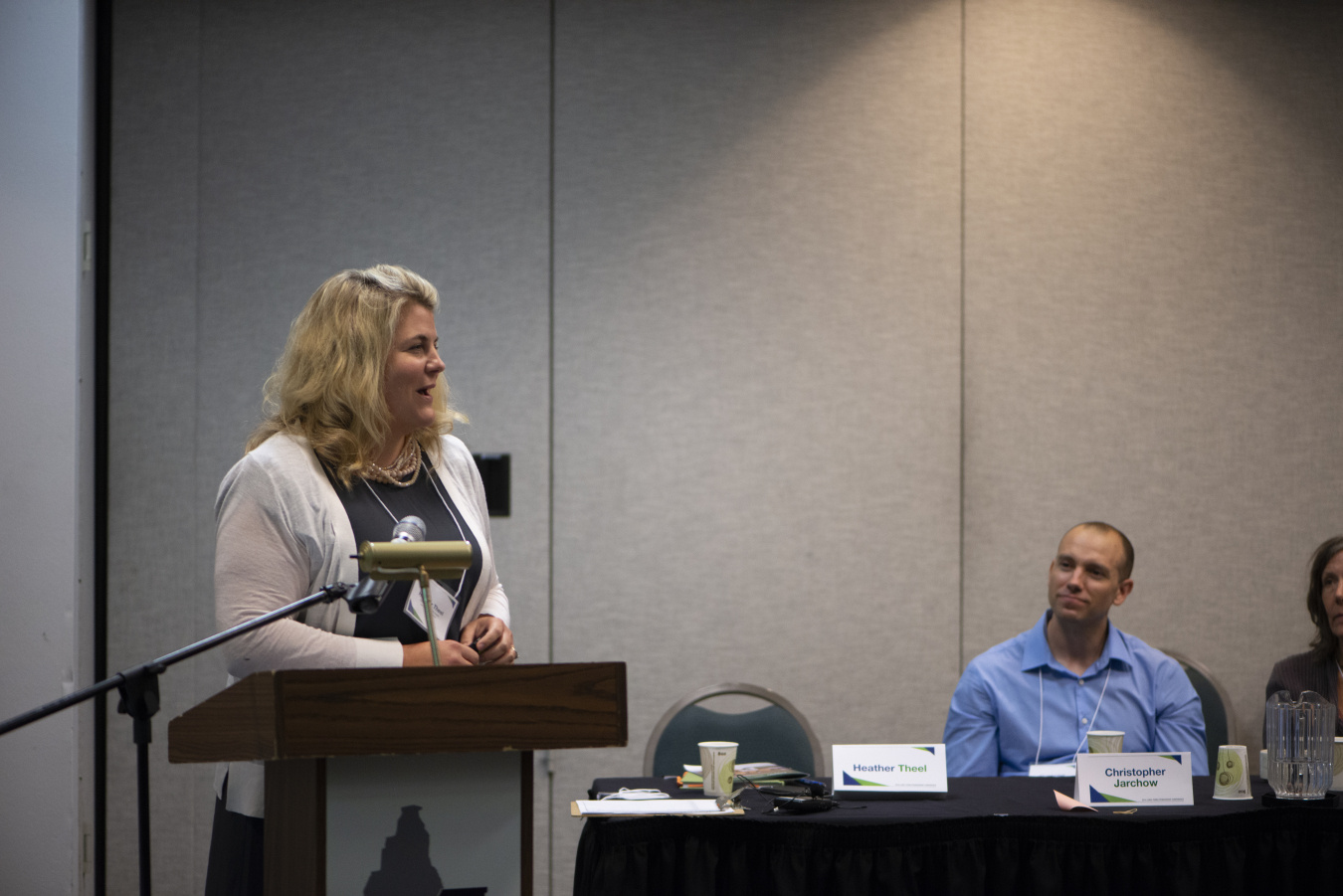
Heather Theel discusses how integrating new spatial technologies supported restoration efforts at the Fernald Preserve, Ohio, Site.

